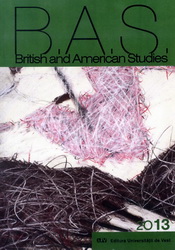ENGLISH VERBS OF MOTION AND PROTOTYPE THEORY
ENGLISH VERBS OF MOTION AND PROTOTYPE THEORY
Author(s): Dušan M. Stamenković, Miloš B. TasićSubject(s): Language and Literature Studies
Published by: Editura Universităţii de Vest din Timişoara / Diacritic Timisoara
Keywords: verbs of motion; prototypicality; semantic analysis; English; word frequency;
Summary/Abstract: The main goal of this paper is to check whether Prototype Theory can be applied to the analysis of the English verbs of motion. More precisely, the paper attempts to apply various elements of S.G. Pulman’s (1983) model of prototype effect testing to a semantic analysis of the English motion verbs (as defined and selected in Miller 1972 and Levin 1993). The methods of analysis include prototypicality rating tests previously used by psychologists (Rosch 1975a,b, Rosch and Lloyd 1978, inter alia), frequency tests and corpus data analysis. The results show that a semantic analysis of verbs based on Prototype Theory is possible, though it has certain constraints. On the whole, there is a steady semantic pattern related to the obtained category structure of motion verbs: the more generic verbs seem to be closer to the centre and, as we move towards the periphery, the verbs tend to be more specific.
Journal: B.A.S. British and American Studies
- Issue Year: 2013
- Issue No: 19
- Page Range: 218-228
- Page Count: 11
- Language: English

